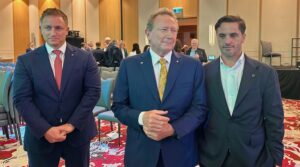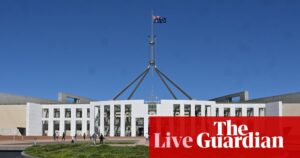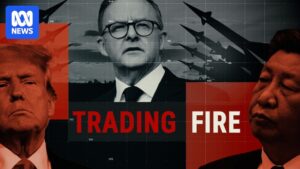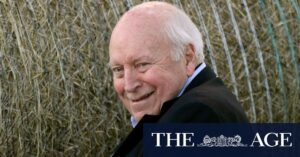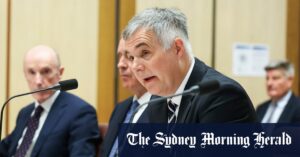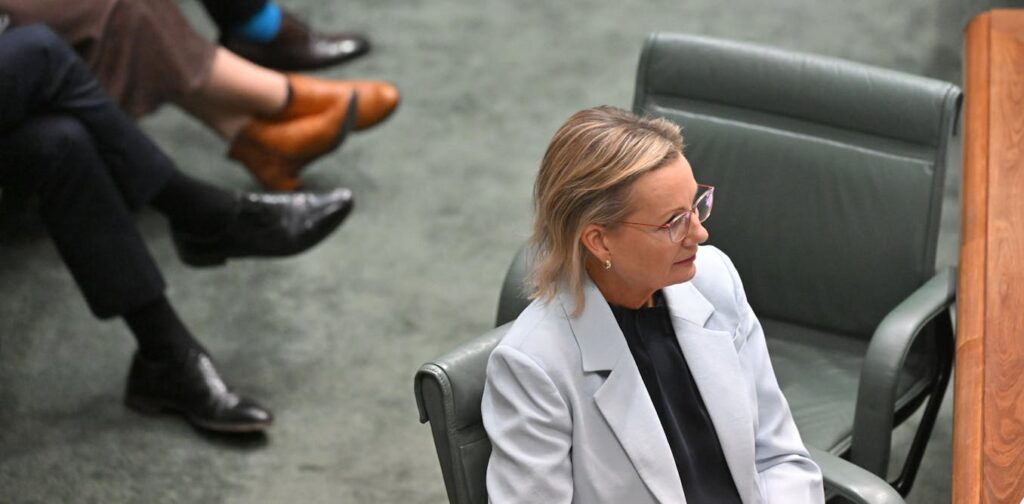
Opposition Leader Sussan Ley is facing a critical moment in her political career, as recent figures reveal a significant drop in her approval ratings. The latest Newspoll shows Labor leading the Coalition 57–43% on the two-party vote, while Ley’s net approval has plummeted to minus–33. Such numbers would be concerning under normal circumstances, but they are particularly alarming given the current existential crisis within the Liberal Party over energy policy.
The poll indicates a 13-point decline in Ley’s net approval since the previous survey. This downturn is attributed in part to her controversial comments about US Ambassador Kevin Rudd and Prime Minister Anthony Albanese’s choice of a Joy Division T-shirt, which have not been well-received by the public.
Internal Divisions Over Energy Policy
The Liberal Party is currently divided over the 2050 net-zero emissions target. The recent decision by the Nationals to abandon the target has further complicated matters, pushing the Liberals closer to the minor party’s stance. Ley, who has previously advocated for achieving net zero as soon as possible, now faces the challenge of maintaining any commitment to this goal within her party.
Angus Taylor, a key rival for Ley’s leadership, was previously open to a compromise involving net zero, despite his personal reservations. However, Taylor’s position appears to be aligning more closely with the Nationals, adding to the pressure on Ley.
Moderate Voices and Internal Struggles
Liberal moderates, including Deputy Senate Leader Anne Ruston, are attempting to resist the shift away from net zero. Ruston reportedly criticized the Nationals for their stance during a recent meeting, although she refrained from discussing the matter publicly. Meanwhile, NSW Senator Andrew Bragg has suggested that the Coalition should aim to achieve net zero more effectively than Labor.
Some moderates within the party are open to the idea of a Coalition split, a sentiment echoed by certain Nationals. This internal discord is further exacerbated by the rise in One Nation’s support, which has surged to 15% in recent polls, threatening to draw votes away from the Nationals on the right.
Leadership Challenges and Future Prospects
Both Ley and Nationals leader David Littleproud are in precarious positions, with Littleproud also facing pressure from his party’s right-wing faction. The complexity of the situation requires a leader with substantial authority to navigate the chaos, a quality that Ley is perceived to lack.
Despite her efforts to connect with the community and share her personal narrative, Ley struggles to project a coherent set of political beliefs. Her leadership is seen as unsteady, and her critics within the party are eager to see her replaced. However, there is reluctance to act immediately, as removing the Liberals’ first female leader after just six months could reinforce the party’s reputation for having a “woman problem.”
“It would take an opposition leader of enormous authority to find a way through this chaos, and Ley carries little or no authority.”
Implications and the Road Ahead
With her opponents hesitant to make a move against her so soon, Ley is likely to remain in a state of uncertainty. Eventually, the Liberals may opt for a leadership change, although this alone may not resolve the party’s underlying issues.
The situation presents a critical juncture for the Liberal Party as it grapples with internal divisions and external pressures. The decisions made in the coming months will have lasting implications for the party’s direction and its ability to present a united front to the electorate.



